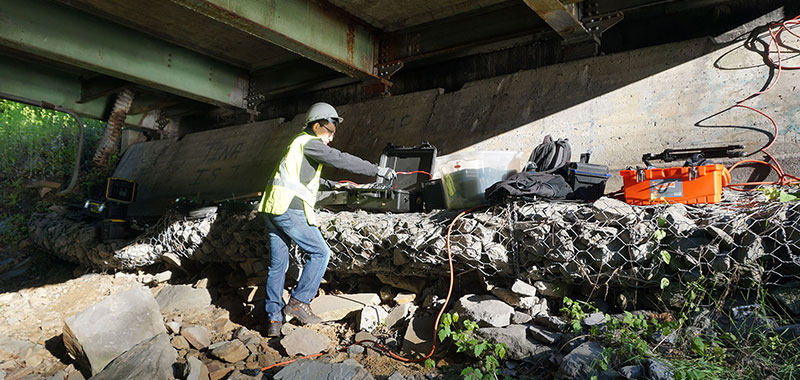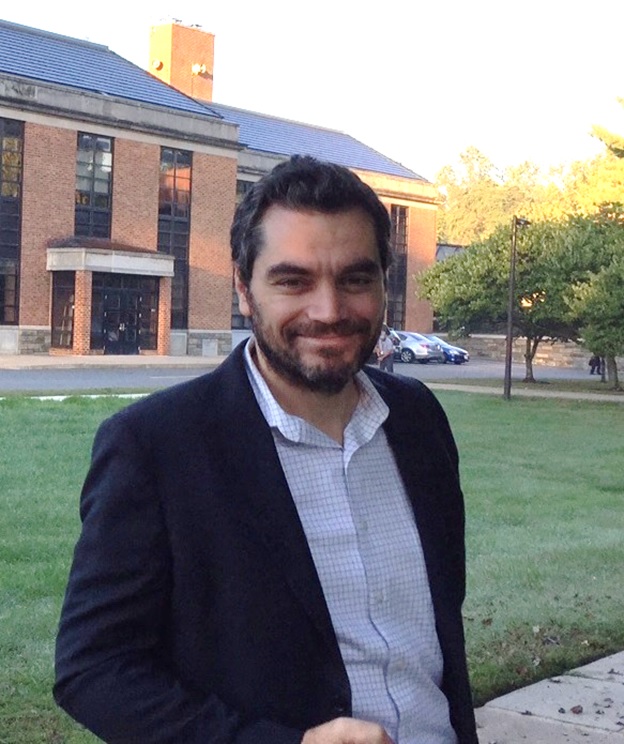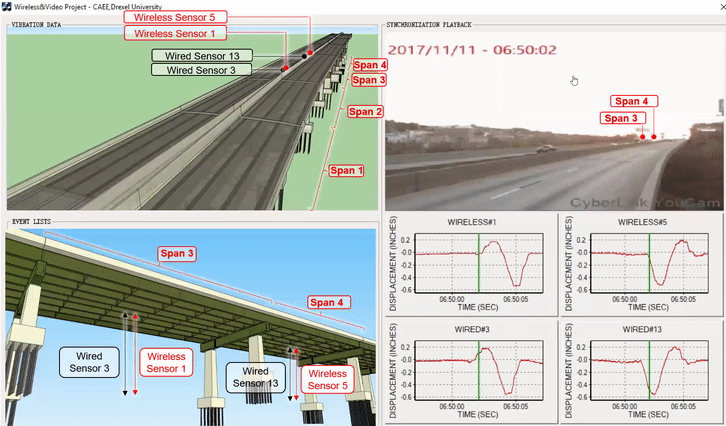Using passive monitoring, a Drexel expert helps others keep track of the health of roads, bridges and more.

Our lives are filled with sensors. You wake up in the morning and your smartwatch tells you how well you slept. You rotate your phone to watch a video and the screen rotates with you. You rely on a fast-reading, ultra-sensitive thermometer to tell you if your chicken is safe to eat. But sensors play a greater role in our day-to-day lives than most of us can imagine.
Ivan Bartoli, PhD, associate professor of civil, architectural and environmental engineering, isn’t most of us. His collaborative work involves using sensors to assess the condition of existing infrastructure and structures, from buildings and bridges to airplanes and railroads.
“There are already established industries built around safety monitoring for these engineering systems,” Bartoli explains. “But the technology used keeps improving, varies a lot depending on the industry, and even the reporting can be quite variable.”

Bridge visual inspection, for example, is mandated once every 24 months. But there are more than 600,000 bridges across the United States, and there can be disparities among the levels of experience and scrutiny that each inspector applies when doing the job.
“An inspector with 20 years of experience may be able to quickly spot the most common problems in a bridge but may overlook unexpected structural concerns,” Bartoli says. “Conversely, a new inspector might focus on details of minor importance, missing the big picture, but may also find a critical flaw in an unexpected component that would be normally missed in a routine inspection.”
This isn’t to say that there’s an epidemic of poorly inspected bridges across the country, Bartoli insists. But by using sensors, inspectors could improve consistency and predictability to their jobs and even add an aspect of passive monitoring, keeping tabs on aspects of a bridge like the deflection in its main girders, the level of vibration of the deck, the tilt of substructures, etc. to spot a problem long before it becomes visible to the naked eye.
The types of sensors needed for Bartoli’s projects can vary from tilt sensors to accelerometers and displacement sensors. To make routine and special inspections easier, new wireless sensors need to be developed, and Bartoli is helping the cause. He was recently awarded a $499,835 Federal Highway Administration grant, as part of the Accelerated Marketing Readiness program, to develop, and eventually commercialize, wireless sensors.
Where Bartoli’s expertise is especially helpful, though, is knowing where the sensors will be most effective. Sensing is not the solution for every structure.
“You may look at a specific bridge, and cosmetically, it appears to be in need of immediate attention,” he says. “But as a civil engineer, through computer modeling and experience I might know that the same bridge is actually built to carry loads far greater than it does on a daily basis, and it’s not in any danger of failing. So I might not recommend spending money for long term passive monitoring of that specific bridge and suggest using limited funding for minor repairs.”

Bartoli also uses his expertise to advise transportation agencies on what types of sensors to use — what accuracy is needed, how often data sampling should occur, whether a sensor will survive extreme temperatures, and what sensor will give the most important information. Once the sensing data is gathered, Bartoli also specializes in analyzing it and making recommendations. The process can be wildly different based on what is being monitored.
“When you’re looking at airplanes, for example, you have hundreds of 737s, and they have all very similar shape, made with the same parts, and are generally the same age,” he says. “So aerospace engineers know that if they spot a critical fault in one aircraft, they should recommend emergency inspections of all planes with the same model and age. But with bridges and buildings, each is unique, and can require different strategies.”
Bartoli’s work often incorporates expertise from other researchers in the College of Engineering, including Professor Emeritus in Civil, Architectural and Environmental Engineering Emin Aktan. One of his most recent projects — a collaboration with LD Betz Professor of Environmental Engineering Charles Haas, PhD, involves using acoustic stress waves to identify the materials used to make various water pipes. The primary goal of the project is to find lead pipes without needing to dig up streets and lawns. The work was recently awarded a grant from the Coulter-Drexel Translational Research Partnership Oversight Committee.
“Cities and towns don’t always have accurate records of what utility pipes have been replaced, when they were installed, and what they’re made of,” he says. “Our process can give us a good indication of where pipes that need to be replaced are.”
Whether he’s studying bridge integrity or working on underground infrastructure, though, Bartoli says that the goals of his work are safety, economic security, and sustainability.
“What I recommend might not align with what the construction industry wants in every project,” he admits. “But if I can stop a bridge from being demolished because the sensors tell us it’s safe, or if I can locate a harmful pipe without wasting manpower and resources, this could save resources to invest on other pieces of infrastructures that are in need of repair or replacement.”

